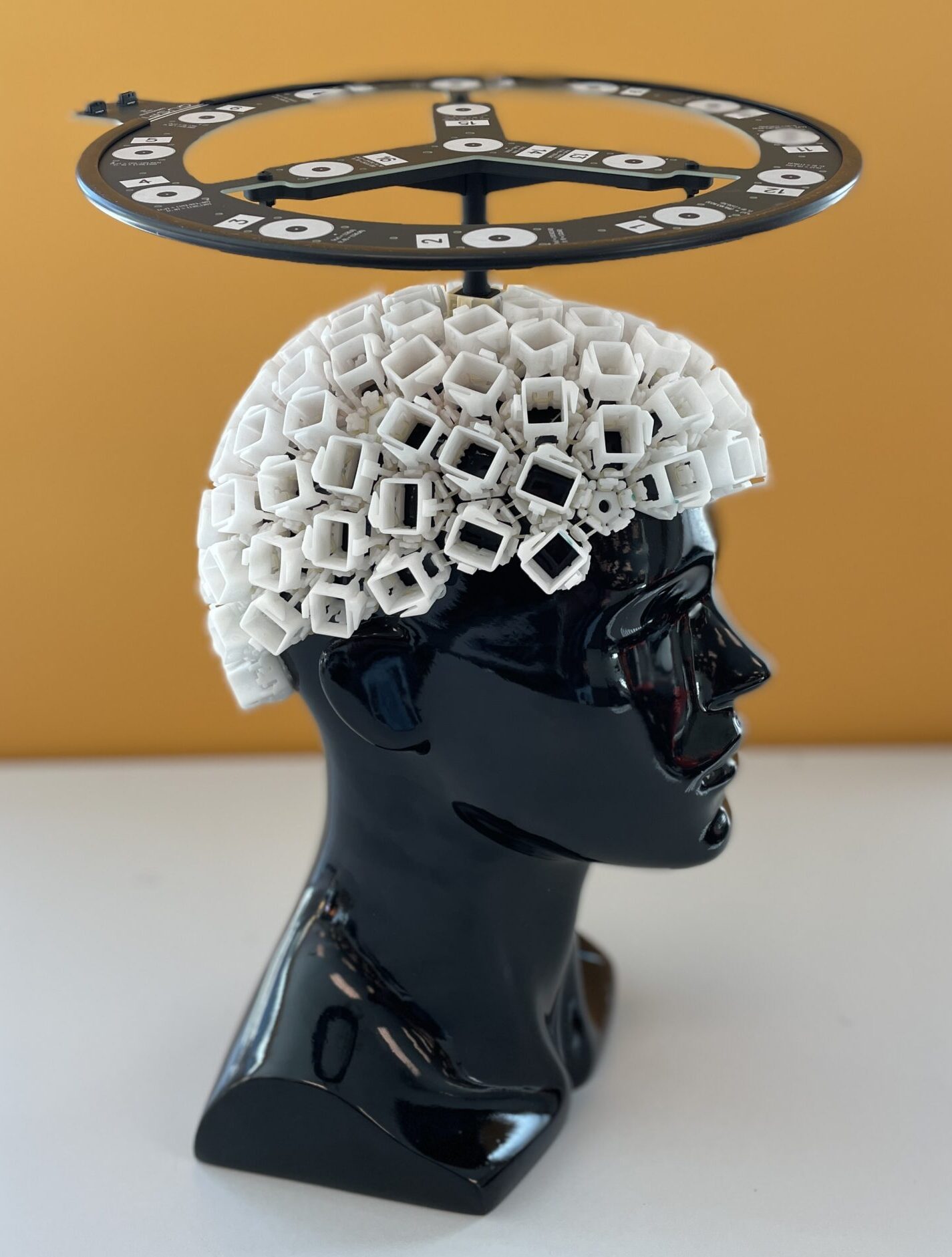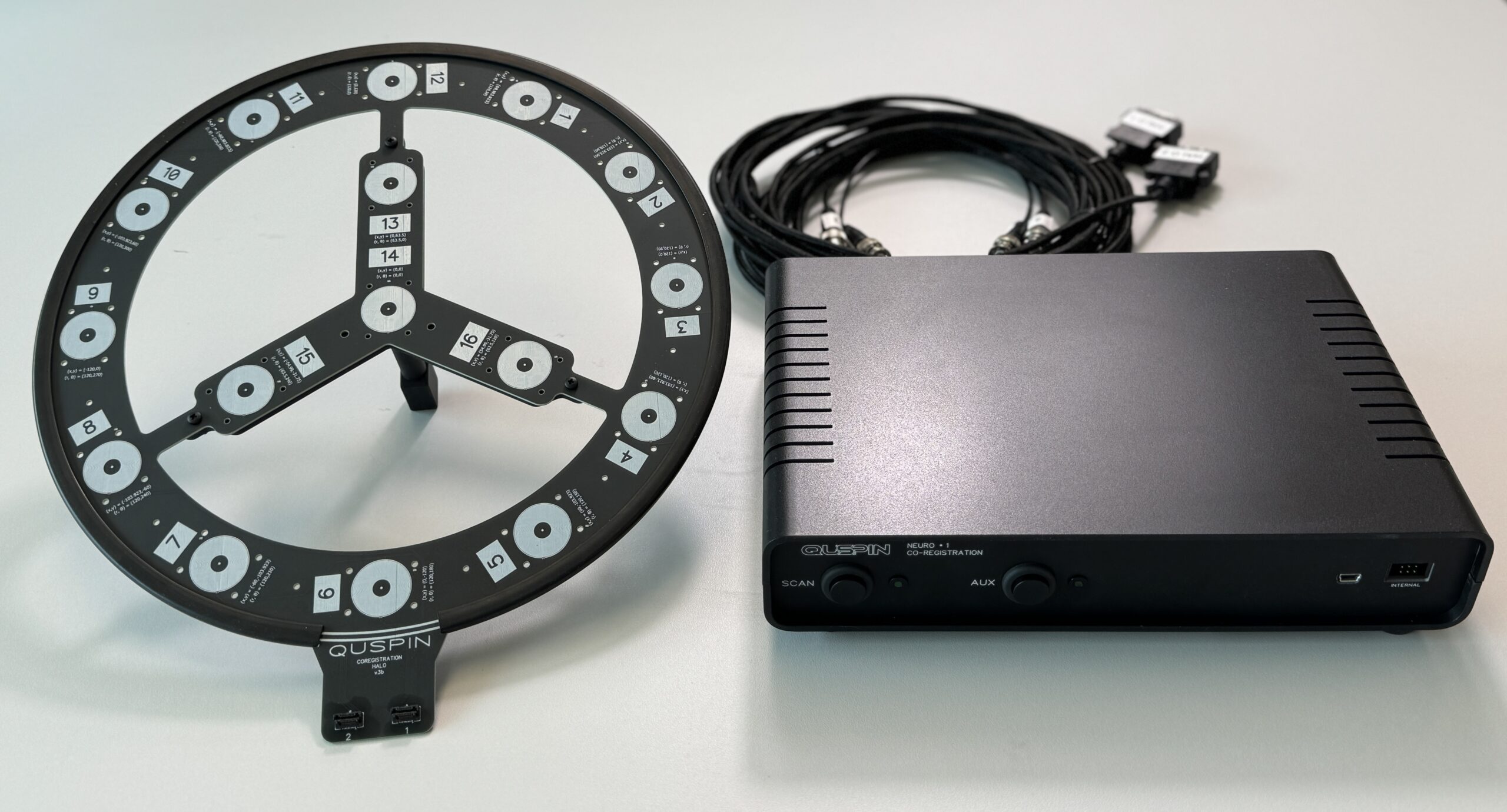Summary: The QuSpin HALO platform offers a turn-key solution for quickly and accurately determining the location, orientation, and calibration data for arrays of QuSpin’s Optically Pumped Magnetometers. This streamlined system provides a user-friendly approach to sensor localization (the first step in the co-registration process) for advanced bio-magnetic sensing applications.
Optically Pumped Magnetometers for bio-magnetic sensing has transformed neuroscience and cardiac diagnostics by enabling new opportunities for real-time monitoring and diagnostics. Using them in flexible sensor arrays, such as QuSpin’s Neuro-1 flex helmet, accommodates a wider range of patient anatomies and testing scenarios, than static arrays.
Using flexible sensor arrays presents a new challenge, since the exact sensor locations and orientations are not known beforehand. This variability makes it impossible to determine the spatial orientation and position of the sensors a-priori, so the sensor localization must be done during the test.

QuSpin’s HALO platform provides a complete solution to this problem. The HALO platform consists of a structured grid–the “halo”–of well defined sources, an electronics box, and localization software. Signals produced by the halo are recorded and then processed by the software to calculate their location and orientation, with respect to the halo. For a 64 sensor array the scan takes place in under 1 minute presenting minimal disruption to the clinician’s workflow. Sensor localization can be computed in real-time or later as needed. If necessary, these positions can be later registered to other data maps, like MRI scans, CT images, or functional brain activity maps, allowing for precise alignment of bio-magnetic data with anatomical information.
For more information about the HALO platform or to request a demonstration, please contact dbobela@quspin.
